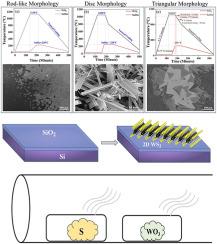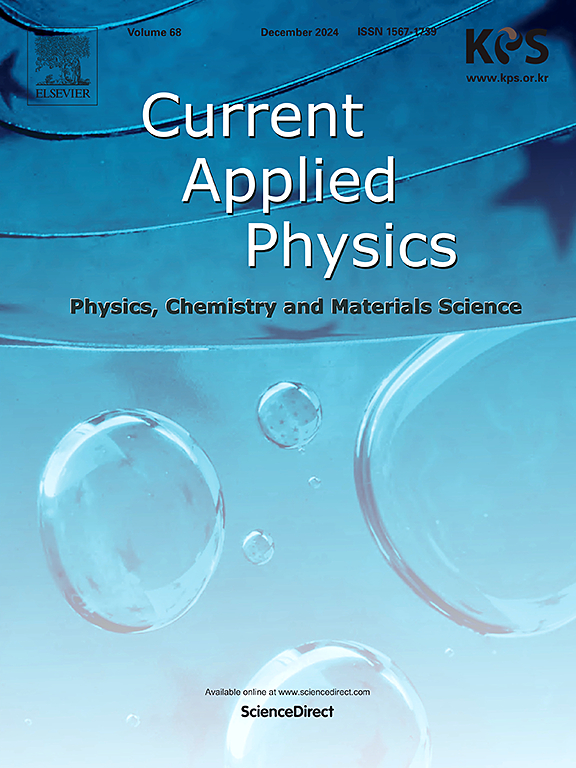Tuning growth parameter for the controlled synthesis of 2D WS2
IF 3.1
4区 物理与天体物理
Q3 MATERIALS SCIENCE, MULTIDISCIPLINARY
引用次数: 0
Abstract
The atmospheric pressure chemical vapor deposition (APCVD) synthesis of high-quality 2D WS2 (tungsten disulfide) critically depends on the precise timing of sulfur vapor introduction. This study investigates the role of sulfur-rich environment and growth time on the surface morphology of 2D WS2 films on the silicon substrate. Three different varying sets of parameters, designated as SP1, SP2, and SP3, were examined to optimize the time of sulfur vapor introduction. This process enabled the formation of large mono- and bi-layer triangular islands, with flake sizes ranging from ∼70 to 164 μm, as well as long few-layer structures. The atomically thin WS2 exhibited strong photoluminescence (PL) at ∼1.93 eV, with a ∼70-fold enhancement and a full-width at half maximum (FWHM) of ∼12 nm. The optimized SP3 parameters were applied using the sapphire substrate, and the results were consistent. Thus, this study highlights the crucial role of sulfur vapor synchronization in WS2 synthesis, enabling control over their morphology, growth and size.

二维WS2可控合成的生长参数调整
常压化学气相沉积(APCVD)法制备高质量二维WS2(二硫化钨)关键取决于硫蒸汽引入的精确时间。本文研究了富硫环境和生长时间对硅衬底上二维WS2薄膜表面形貌的影响。采用SP1、SP2和SP3 3个不同的参数集来优化硫蒸汽的引入时间。这个过程可以形成大的单层和双层三角形岛,鳞片尺寸范围从~ 70到164 μm,以及长而少层的结构。原子薄的WS2在~ 1.93 eV下表现出强烈的光致发光(PL),增强了~ 70倍,半最大值全宽度(FWHM)为~ 12 nm。在蓝宝石衬底上应用优化后的SP3参数,结果一致。因此,本研究强调了硫蒸气同步在WS2合成中的关键作用,使其能够控制其形态,生长和尺寸。
本文章由计算机程序翻译,如有差异,请以英文原文为准。
求助全文
约1分钟内获得全文
求助全文
来源期刊

Current Applied Physics
物理-材料科学:综合
CiteScore
4.80
自引率
0.00%
发文量
213
审稿时长
33 days
期刊介绍:
Current Applied Physics (Curr. Appl. Phys.) is a monthly published international journal covering all the fields of applied science investigating the physics of the advanced materials for future applications.
Other areas covered: Experimental and theoretical aspects of advanced materials and devices dealing with synthesis or structural chemistry, physical and electronic properties, photonics, engineering applications, and uniquely pertinent measurement or analytical techniques.
Current Applied Physics, published since 2001, covers physics, chemistry and materials science, including bio-materials, with their engineering aspects. It is a truly interdisciplinary journal opening a forum for scientists of all related fields, a unique point of the journal discriminating it from other worldwide and/or Pacific Rim applied physics journals.
Regular research papers, letters and review articles with contents meeting the scope of the journal will be considered for publication after peer review.
The Journal is owned by the Korean Physical Society.
 求助内容:
求助内容: 应助结果提醒方式:
应助结果提醒方式:


